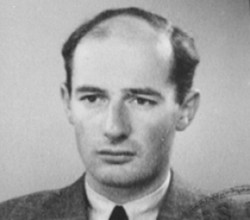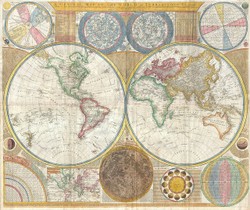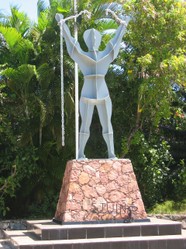Thanks to the cinematic artistry of Steven Spielberg, the heroic actions of Oskar Schindler are well known across the world. But have you ever heard of Raoul Wallenberg, a man credited with saving tens of thousands of Hungarian Jews in the final years of World War Two? Though history has recorded his heroic actions, the fate of Raoul Wallenberg remains a mystery--did he die at the hands of Russian spies or did he survive for decades in a Soviet prison?

Raoul Wallenberg: Lost Hero of The Holocaust
In the death and destruction of World War Two and the Holocaust, a Swedish architect named Raoul Wallenberg would be responsible for saving countless lives.
When I First "Met" Raoul Wallenberg
I was in the second year of my History degree when I had the privilege of taking a History course called "The Holocaust of European Jewry," taught by a brilliant professor named Gerald Tulchinsky. The course was based on one exam and one paper, the topic of which we could choose from a designated list.
After leaving it to the last minute, I had only a few topics to choose from. The phrase "Altruism during the Holocaust" seemed to hold some promise, so after looking up what altruism meant--"unselfish regard for or devotion to the welfare of others," according to Merriam Webster--I set out on a quest to find acts of altruism during the Holocaust.
Now these were the days before Google and Wikipedia, so it was to the stacks of the university library I headed. I poured over several volumes of war books before I came across the story of Raoul Wallenberg--and I was astonished. His actions and the assistance of his native country, Sweden, were feats of bravery that had never even occurred to me. In lectures, we had discussed resistance movements and families hiding other families of Jews, and in some cases a few people were rescued from the Nazi gas chambers. Yet Raoul Wallenberg saved tens of thousands of Jews, right at the height of Adolf Eichmann's extermination efforts, and the ways he did it were amazing.
Somehow this man has been lost to common history, and few people know his name, let alone his courageous and unprecedented story.
An Abbreviated Biography of Raoul Wallenberg
Born to a large and prominent family, Raoul enjoyed a loving upbringing.
The Wallenberg's were one of the most prominent families in Sweden in the early twentieth century. Aristocrats, bishops, officers and professors, the Wallenberg family was admired and respected throughout the country. Raoul's parents were Raoul Wallenberg Sr., a naval officer and Maj Wising, a doctor's daughter. Three months before young Raoul was born on August 4, 1911, his father tragically died of cancer. Raoul's mother remarried and had two more children, Guy and Nina, to whom Raoul was very close.
Unusual for the time, Raoul travelled to the United States in 1931 and earned an architecture degree from the University of Michigan. He was well-liked and enjoyed the company of many friends--in Elenore Lester's book Raoul Wallenberg: The Man in the Iron Web, classmates describe Raoul as, “full of energy, good humor and generally a good guy.” After completing his studies, Raoul returned to Sweden to be with his family and find work.
Before returning to Sweden, Raoul found work in South Africa and Palestine. It was in Palestine that Raoul first noticed the serious nature of Jewish persecution. He had many Jewish friends, well-educated and experienced individuals who were all but penniless after the institution of the Nuremberg Laws that, among other things, denied education and revoked employment status of Jews.
When Raoul returned to Sweden in 1941, his American architecture degree wasn't recognized. He was at loose ends. Raoul eventually found work with an import-export company owned by Kalman Lauer. As a Jew, Lauer was facing great difficulty traveling throughout Europe, so Raoul began running the company's foreign division.
Raoul had always been troubled by the mistreatment of Jews. He had many Jewish friends and colleagues, and possibly some Jewish blood in his background--but more than that, Raoul was a humanitarian in a time where much of humanity seemed to have lost its mind.
Read More About Raoul's Life Here
 | Wallenberg: Missing Hero January 17, 1995, marks the 50th anniversary of the disappearance of Raoul Wallenberg, one of the greatest heroes of the Holocaust. Here is an authoritative account of Wallenber... |
 | Righteous Gentile: The Story of Raoul Wallenberg, Missing Hero of the Holocaust Half a century after he disappeared into the Soviet prison system, the fate of Raoul Wallenberg--who saved thousands of Hungarian Jews during the Holocaust--remains a mystery. F... |
 | With Raoul Wallenberg in Budapest: Memories of the War Years in Hungary |
The Inescapable Opportunity
When Raoul was introduced to Iver Olsen, the fate of thousands of Hungarian Jews was turned.
As the war progressed into 1944, the extermination of European Jews became known throughout the Western world. United States President Roosevelt sent an ambassador, Iver Olsen, to Stockholm to help the situation as a member of the American War Refugee Board.
Olsen had big plans--he wanted someone brave, daring, but intelligent and resourceful, to thrust themselves into the heart of the Nazi's "Final Solution" operation. When Olsen mentioned the idea to his friend Kalman Lauer, Raoul's employer, Lauer knew Raoul was the person for the mission.
Raoul grasped the opportunity. Finally, he could do something, something important, something that would change lives, and save lives. As a member of a diplomatic family, Raoul called on certain "privileges" and set his plan in motion.
The Plan in Action
Defying Nazi authority and playing their own pretentions against them, Raoul starts making the rules.
Eichmann's plans for Hungarian Jews were to be quick and brutal--he would banish the entire population to a ghetto and bomb the ghetto, killing all 70 000 Jews believed to be in Hungary.
Similar to Schindler, Raoul's first step was setting up an "office" that had well over 400 "employees"--in reality, he had created a safe house for that many Jews and more. But it was Raoul's next actions that are simply heroic in the truest sense of the word. He demanded that the Swedish government give him unlimited control to issue passports and official travel documents to whomever he pleased. And the government whole-heartedly agreed.
Starting with his "employees," Raoul issued them each a Schutzpass, a Swedish passport. At first, the documents were relatively official and created through the appropriate channels--but it was soon evident to Raoul that he needed more documents, and fast. Knowing the Nazi's were suckers for anything flashy looking, he began creating "passports" on brightly coloured paper, complete with several shiny yellow Swedish crowns emblazoned on them. In reality, the documents were nothing more than paper, plain worthless paper. And for some inexplicable reason, the Nazi's bought it, and for some greater unknown reason, they honoured Wallenberg's authority, and that of a Swedish passport. Perhaps it was Raoul's willingness to bribe and threaten anyone if it meant he could issue more passports, stop more trains and save more lives. The Swedish government was bewildered at Raoul's risky feats and amazed with his results--they strongly supported his efforts.
As an architect, Raoul used his skills to build more Jewish safe houses capable of housing nearly 35 000 souls in a space that had previously held merely 5000 people. Wallenberg was even known to stand on top of trains bound for concentration camps, stuffing Schutzpasses through the roof of the train, then ordering the Nazi soldiers to remove from the train all persons holding a pass. And they did. It is believed that Raoul saved upwards of 20 000 people from the gas chambers, perhaps more, with his Schutzpass plan. It was a daring scheme, an inspired plan, and it worked.
The Mystery Surrounding Raoul's Fate
On a cold morning in January 1945, Raoul left and was never seen again.
Just as compelling as his life is Raoul's disappearance and death at the end of the war. Although his authority was frequently honoured by the Nazi's, the Russian government suspected him of being a spy and were eager to detain him for questioning. One morning, some Soviet police officers found Raoul, escorted him from his home, and he was never seen again.
It was initially presumed that Raoul was executed in a Soviet prison some time in 1947, but reports abounded for decades that he was still alive, with the last sighting dated as late as 1987. He was the epitome of selflessness and altruism at a time when, to do so, would mean certain death. And it did. Raoul's exact fate is still unknown, despite his family's desperate attempts to learn the truth.
What Makes Raoul Wallenberg's Story Different?
Many people made tremendous sacrifices and accomplished gradn things--why is Wallenberg special?
There are two primary reasons that makes Raoul's story of altruism stand out as a hero among heroes.
First, he didn't have to do anything. He wasn't under direct threat, his family wasn't in a ghetto or concentration camp, his livelihood wasn't collapsing. Raoul was well-educated and connected, both socially and professionally. He very well could have established a prosperous business in Stockholm after the war, had a family and lived happily to a natural death in old age. But he didn't. Instead, he used his talents, position and ambition to save people's lives at the ultimate cost of his own. Raoul simply saw that the Nazi's plans for a "Final Solution" to the Jews was wrong and his spirit chose to rise up against it.
And second, the Swedish government gave Raoul full reign to do what he needed to save as many Hungarian Jews as could. When other countries were turning away boats of Jewish children and denying the Holocaust despite the evidence, Sweden was unprecedented in saying that, as a country, they would break any rules, cut the red tape and open their doors to save thousands of people. Because of this, Sweden still stands as an example of true "superpower" to the rest of the world.
 | Pathological Altruism The benefits of altruism and empathy are obvious. These qualities are so highly regarded and embedded in both secular and religious societies that it seems almost heretical to s... |
 | The Price of Altruism: George Price and the Search for the Origins of Kindness “Enthralling.”—Frans de Waal, The New York Times Book ReviewSurvival of the fittest or survival of the nicest? Since the dawn of time man has contemplated the mystery of altruis... |
His Final Legacy
Honoured by the Yad Vashem, Raoul Wallenberg will never be forgotten.
Since writing that paper back in my university days, the story of Raoul Wallenberg is one I turn to as an example of altruism in action and how the determination of one person can change so many lives. His story has stuck with me through all these many years and the lessons of Raoul's life are ones we all need to share and remember.
In Israel in 1963, Yad Vashem, the memorial association dedicated to the Holocaust and its victims, bestowed the title of "Righteous Gentile" to Raoul Wallenberg. He was also made an honourary citizen of the United States, Canada, Israel and Budapest.
Though Raoul's fate remains a mystery, the gravity of his actions have been admired and well honoured since his story came to light. One can only ponder if Raoul truly understood how incredible his actions were, if he knew the lasting legacy his courage would have for the Jewish people, for all people. His story is one worth learning, repeating and remembering.
"Whoever saves one life, saves the world entire."--Talmud
Sources:
http://www.wallenberg.umich.edu
http://www.raoulwallenberg.se/tribute_citizenship.htm
http://www.yadvashem.org
http://www.jewishvirtuallibrary.org/jsource/biography/wallenberg.html
You might also like
Writing About History on WizzleyDo you want to write a history article for Wizzley, but don't know which sub-...
Thinking About SlaveryPeople of all nations have been victims, culprits and opponents of slavery.



 Health Benefits of Knitting and Crocheton 02/17/2013
Health Benefits of Knitting and Crocheton 02/17/2013
 White Chocolate Hello Dollies--A Classic Dessert With a Modern Twiston 02/20/2013
White Chocolate Hello Dollies--A Classic Dessert With a Modern Twiston 02/20/2013
 How To Survive A Canadian Winter When You're Australianon 02/16/2013
How To Survive A Canadian Winter When You're Australianon 02/16/2013
 Is Teething Real?on 02/10/2013
Is Teething Real?on 02/10/2013



Comments
Thanks georgettejohn! I think his story is amazing and one worth sharing...!
Excellent article Brooke. Very interesting and proof positive that one person can truly make a difference.